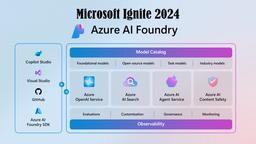What is Connected Papers?
Connected Papers is an innovative web application designed to help researchers and students navigate the vast landscape of academic literature. By leveraging the Semantic Scholar database, it allows users to input a paper of interest and generates a visual graph that illustrates related works within the same field. This unique feature enables an intuitive exploration of key relationships, trends, and influential papers, making it easier to stay updated in fast-paced disciplines like machine learning.
The platform not only helps in discovering significant prior and derivative works but also streamlines the process of creating bibliographies for theses or research projects. Users can explore connections, identify seminal papers, and build upon existing knowledge effortlessly. With its user-friendly interface and support for diverse scientific fields, Connected Papers serves as a valuable tool for anyone looking to deepen their understanding of academic research and foster innovative ideas. Whether you are a seasoned researcher or a student, Connected Papers makes literature mapping both efficient and engaging.

Features of Connected Papers
Connected Papers offers a range of features that set it apart in the realm of academic research tools:
- Visual Graph Representation: The platform generates an intuitive graph that visually depicts related research based on a user-input paper. Each node represents a paper, with size indicating citation count and color denoting publication year.
- Prior and Derivative Works Discovery: Specialized views help users explore "Prior Works" (important ancestor papers) and "Derivative Works" (recent literature reviews and state-of-the-art papers), providing comprehensive insight into a topic's evolution.
- User-Friendly Interface: The platform's design allows for seamless navigation through the graph, enabling users to quickly gather detailed information about each research work.
- Graph Building and Saving: Researchers can create and save new graphs based on their findings, fostering iterative exploration and personalized literature collections.
- Cross-Disciplinary Support: With integration to the Semantic Scholar database, Connected Papers supports a wide range of scientific fields, catering to diverse research needs.
How Does Connected Papers Work?
Connected Papers operates by utilizing advanced algorithms such as co-citation and bibliographic coupling to cluster papers in a force-directed graph. Users can input a relevant paper's title, DOI, or URL to generate a visual representation of related academic papers based on their conceptual similarities, rather than just citation relationships.
The resulting graph clusters papers with node size indicating citation counts and color reflecting publication years. This visual representation allows researchers to quickly identify important works, uncover prior and derivative research, and ensure they don't overlook significant contributions in fast-evolving fields like artificial intelligence.
Moreover, Connected Papers supports the exploration of multiple seed papers simultaneously, facilitating a comprehensive understanding of trends and dynamics within a research area. The platform also enables users to export connected paper lists to reference management software, supporting efficient bibliography creation.
Benefits of Connected Papers
The benefits of using Connected Papers are numerous and significant:
- Visual Exploration: The tool's visual graph representation allows users to easily identify and navigate connections based on conceptual similarity, providing a comprehensive overview of their field.
- Uncovering Hidden Gems: Researchers can discover key papers they might have missed, particularly valuable in fast-paced domains like machine learning.
- Tracing Idea Evolution: The ability to highlight both prior and derivative works enables users to trace the evolution of ideas and identify seminal papers that have influenced subsequent research.
- User-Friendly Interface: The simplified exploration process makes the tool accessible even to those unfamiliar with traditional citation methods.
- Flexible Access: Connected Papers offers a free version with a premium subscription available for those needing unlimited graphs, catering to a wide audience from students to established researchers.
Alternatives to Connected Papers
While Connected Papers offers a unique set of features, several open-source alternatives are available for literature reviews:
- Research Rabbit: Allows creation of paper collections and provides recommendations based on citation networks.
- Inciteful: Generates multiple output lists and supports importing papers via BibTeX with SQL access for tailored searches.
- Litmaps: Offers interactive literature mapping with email alerts for new related literature.
- VOSviewer: A bibliometric mapping tool providing robust visualization options based on citation data.
- CoCites: Designed specifically for life sciences, it effectively maps citation relationships using validated methodologies.
In conclusion, Connected Papers stands out as a powerful tool for academic literature exploration, offering an intuitive visual approach to understanding research landscapes. Its unique features and user-friendly interface make it an invaluable resource for researchers across various disciplines, particularly in fast-evolving fields like artificial intelligence. While alternatives exist, Connected Papers' combination of visual representation, comprehensive database integration, and ease of use positions it as a leading solution in the realm of academic research tools.




